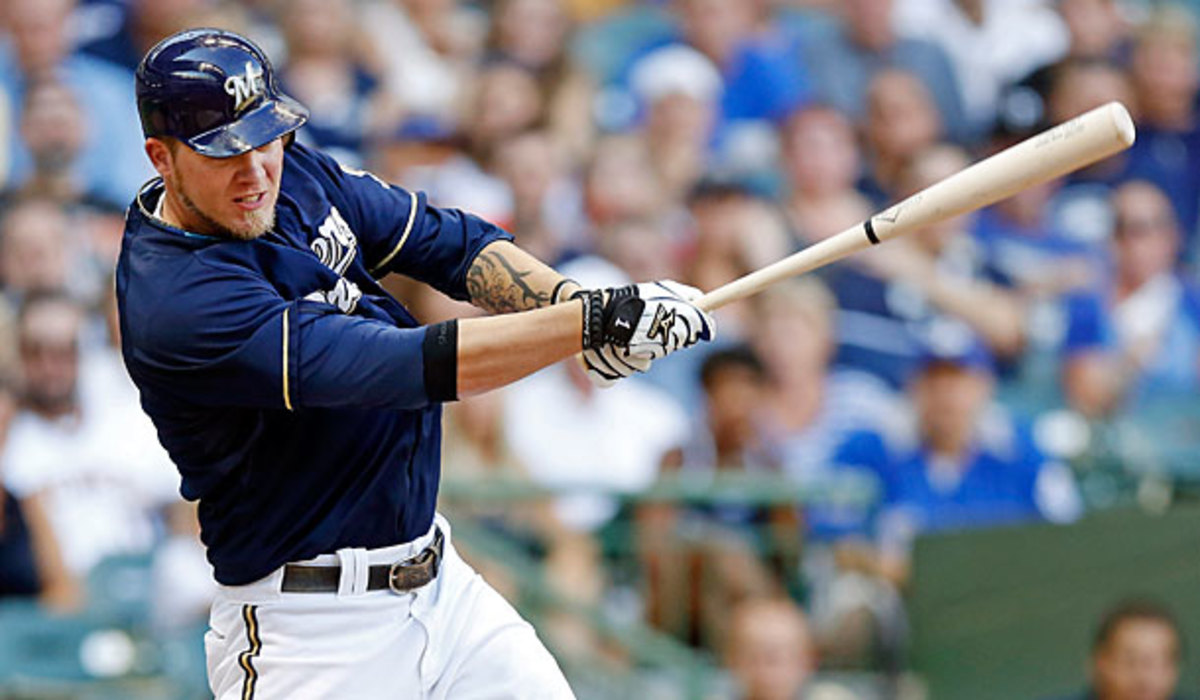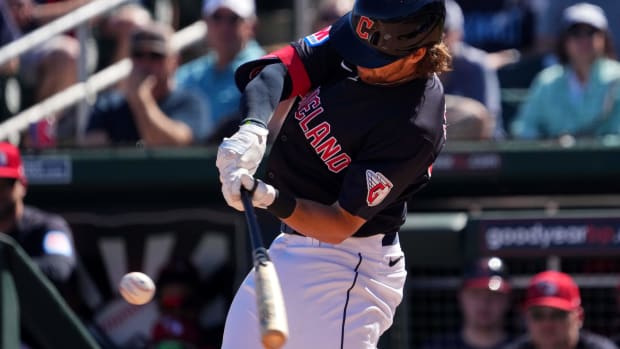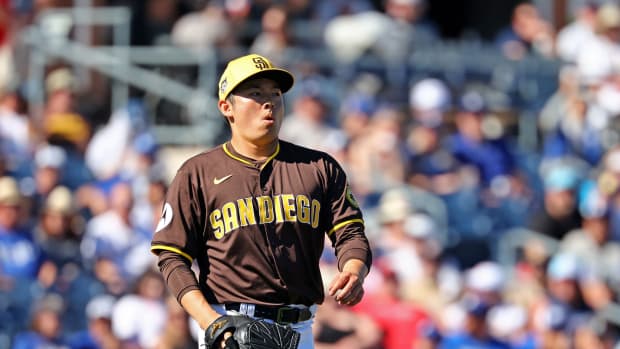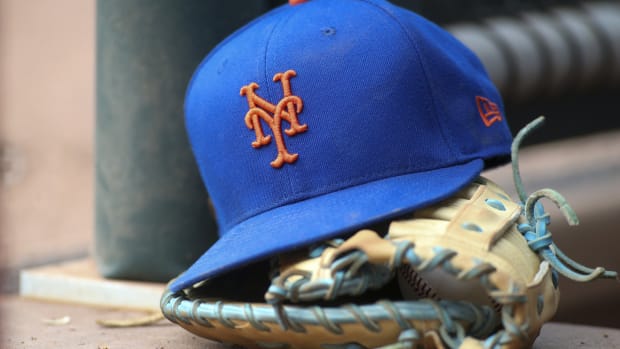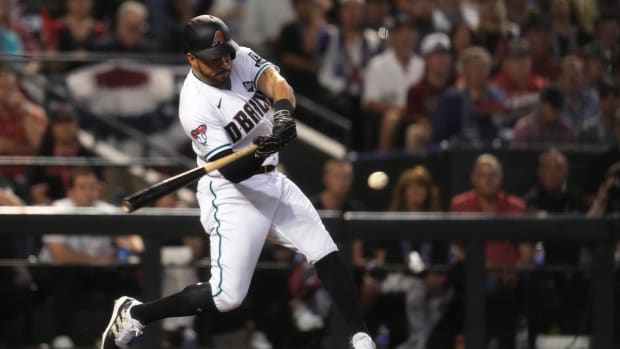Additions of Corey Hart and Logan Morrison suggest new Mariners are same old Mariners
Corey Hart missed all of last season with an injury but was a two-time All-Star in Milwaukee. (Tom Lynn/AP)
The Mariners made two moves on Wednesday to add support for Robinson Cano in their lineup, signing former Brewer Corey Hart to a one-year contract and trading righthanded reliever Carter Capps to the Marlins for Logan Morrison. Both Hart and Morrison were being pursued by other teams to fill their first-base holes, but there's a chance that neither will be the primary first baseman in Seattle because of their experience in the outfield and the presence of incumbent first baseman Justin Smoak.
{C}
All three players graded out as poor defensive first basemen in their most recent seasons according to Defensive Runs Saved and Fielding Runs Above Average, but Hart and Morrison have played more outfield than first base in the majors, whereas Smoak has never appeared in the field at any other position as a professional. As their roster is currently constructed, the Mariners will likely use the three players to fill first base, leftfield and designated hitter, possibly rotating Hart and Morrison through all three positions while toggling Smoak between first and DH.
Of the two additions, Hart whose $6 million base salary for 2014 could increase to $13 million if he meets all of the incentives in his contract, is the more promising. He hit .279/.343/.514 from 2010 to 2012, averaging 29 home runs and 83 RBIs. Of course, he's now 32, more than a year removed from any major league action because of knee problems and will suffer from the move from hitting- and homer-friendly Miller Park to pitcher-friendly Safeco.
That last item is the biggest concern here. As a righthanded power hitter who doesn't draw many walks, Hart's value could take a major hit in Safeco, a ballpark that is particularly hard on righthanded power bats. A comparison to Adrian Beltre, who has since proven himself to be a far better hitter than Hart but hit just .266/.317/.442 in five years with the Mariners in his late 20s, is somewhat appropriate. Hart hit .252/.312/.435 on the road from 2010-12. It wouldn't be a shock to see his numbers dip toward those in 2014, and he offers little value outside of the batter's box.
Of course, that road split of Hart's is better than what Morrison, 26, gave Miami last year after returning in June from offseason knee surgery. Morrison hit .242/.333/.375 in 333 plate appearances in 2013, failing to recapture either the keen batting eye that was his calling card in the minors and as a rookie in 2010 or the power he displayed in what remains his only full major league season in 2011, when he hit 23 home runs in the Marlins' final season at Sun Life Stadium. In fact, his return last year was discouraging for many reasons. Not only was his final line disappointing, but his performance fell off after the All-Star break as he hit .225/.319/.314 in the second half, and he struggled against his fellow lefties, posting a miserable .183/.266/.225 line against southpaws.
Though Smoak is a switch-hitter, he shares the same weakness as Morrison, having hit just .192/.274/.274 against lefties in 164 plate appearances in 2013. Despite that split, this past year was Smoak's best major league season, as he hit .260/.361/.477 with 18 home runs in 357 plate appearances against righties with a career-high walk rate against all opponents. Smoak's overall line of .238/.334/.412 with 20 home runs wasn't particularly inspiring, but it, too, bested Morrison's 2013 performance. Smoak is now entering his peak age-27 season, which is why it seems unlikely that the additions of Hart and Morrision alone are going to push him to the bench.
There's certainly potential here for Hart to be legitimate righthanded protection for lefthanded superstar Cano in the heart of the Mariners' order. Also, Morrison and Smoak, perhaps with platoon help in the form of righties Jesus Montero (who is now a first baseman) and Triple A outfielder Stefan Romero or further additions to the roster, could be positive contributors as well. And Seattle did have leftfield and DH open because both Kendrys Morales (who will bring Seattle draft pick compensation if he signs elsewhere) and Raul Ibañez are free agents.
However, the acquisitions of Hart and Morrison, both of whom are on the far left side of the defensive spectrum, does nothing to counter the criticism levied by former special assistant Tony Blengino in the Seattle Times on Saturday that general manager Jack Zduriencik has become "obsessed with power hitters, ignoring defense, baserunning and roster construction."
Indeed, these moves echo last winter's additions of Morales, Ibañez and Jason Bay. On one level, signing Hart and trading for Morrison coming off injury and poor performance is effective bargain hunting, buying low on a former All-Star (Hart) and a former top-20 prospect (Morrison). On another, they again show Zduriencik building up the wrong side of his roster. Morales and Ibañez were the Mariners' two best hitters in 2013, but the performances of both were undermined considerably by their poor play outside of the batter's box. Given Hart and Morrison's weaknesses, there doesn't seem to be enough upside in these moves to radically change Seattle's 2014 outlook even if the new duo replicates the success of Morales and Ibañez.
As for Capps, the player the Marlins received for Morrison's three arbitration-eligible seasons, he's a 23-year-old who throws in the upper-90s with a sinker/slider combo and a changeup. In 84 career major league innings, 59 of which came in 2013, Caps has struck out more than 10 men per nine innings, comfortably offsetting a high but not problematic walk rate. However, he has also given up a ton of hard contact as evidenced by his .368 opponent's batting average on balls in play and 1.8 home runs per nine innings this past season despite his pitching in a homer-suppressing ballpark. That home run rate and his 5.04 career ERA could prove misleading, as Capps is a converted catcher and the Marlins will have five team-controlled years to turn his success in the strike zone into overall success in their bullpen.
Given Miami's eagerness to dispose of the controversial and outspoken Morrison, who filed a grievance against the team in 2011 and authors a controversial Twitter account, the front office is likely happy to have landed a live major league arm in return. Garrett Jones, who signed a two-year, $7.5 million contract with the Marlins that was officially announced on Tuesday, will take over first base in Miami, though he, too, will need a righthanded platoon partner.






























